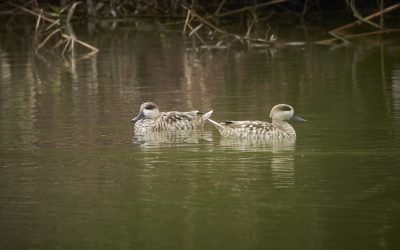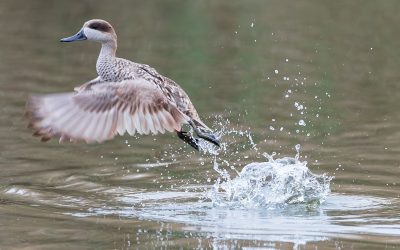Spain has a new Strategy for the conservation of marbled teal, coot, white-headed duck and Ferruginous pochard, approved by the Sectoral Conference on the Environment. The new strategy updates the previous one, approved in 2013, and incorporates a new species, the Ferruginous Duck. The four waterbirds, all of them of European importance, have been considered together due to their similarities in terms of conservation status, threats and ecological requirements.
The main objective of this strategy is to reverse the level of threat to these waterbirds, for which an identification of the limiting factors has been carried out, as well as a diagnosis of their conservation status. Data from censuses and actions carried out from 2012 to 2022 have been taken into account. In addition, the strategy identifies as Critical Sites those wetlands with a regular presence of these birds and where they are currently breeding or have done so in the last ten years, and also identifies areas that could potentially colonise, which it calls Expansion Sites. The objectives and actions of the strategy apply to all of them.
ACTIONS TO MINIMISE THREATS
The document points out that there are several threats that negatively affect the four species and their habitats. Specifically, it highlights the loss and degradation of wetlands; accidental hunting and poaching; the impact of predation, carried out by different generalist species whose populations are favoured by human activities, such as feral cats, epidemiological outbreaks or the negative effect of some invasive alien species.
In order to minimise these effects and try to improve the conservation status of the marbled teal, the coot, the white-headed duck and the pochard, the strategy considers lines of action that include reinforcing the legal protection of the four species and their habitat; the promotion of wetland management, including increasing the quality and availability of water resources and their restoration; as well as the elimination or minimisation of the causes of non-natural mortality, such as accidental hunting and poaching or inadequate fishing practices, among others.
ACTIONS TO PROMOTE CONSERVATION
In addition, actions are also envisaged for the promotion of ex situ conservation, especially in the case of the coot and the marbled teal; the promotion of applied research; support for the dissemination, communication and awareness of the strategy itself and of the conservation of these species and their habitats; as well as the improvement of national coordination and the promotion of international cooperation in this area.
QUANTIFIABLE OBJECTIVES
A notable novelty of the new strategy is the establishment of quantifiable objectives with time-bound targets. Specifically, the main strategic objective establishes that by 2040 the coot and the white-headed duck will no longer be included in the Spanish Catalogue of Threatened Species as ‘In danger of extinction’, and the marbled teal as ‘In a critical situation’. In addition, for the marbled teal, the strategic objective is also defined as a minimum of 125 breeding pairs in Spain by 2035, without extreme fluctuations due to non-natural causes, for a continuous period of at least 10 years. No specific objectives are included for the Ferruginous pochard, as it is considered that the priorities and actions proposed for the conservation of the other three species will sufficiently benefit it.
In order to achieve these strategic goals, eight general objectives and 44 specific objectives common to all four species or focused on one of them are established.
The technical body for coordination between administrations continues to be the Working Group for the target species of the strategy, which reports to the Wildlife Committee.
SUPPORT FROM LIFE CERCETA PARDILLA
The development of the strategy has been supported by the LIFE Cerceta Pardilla project, which is coordinated by the Fundación Biodiversidad of the MITECO until 2025. This initiative aims to improve the conservation status of 3,000 hectares of wetlands to reverse the risk of extinction of Europe’s most endangered duck. To this end, it develops a series of research, conservation, governance and awareness-raising actions to reinforce the state of its populations in the natural environment, improve the state of the wetlands and scientific knowledge of the species.
The project, which is coordinated by the Biodiversity Foundation of the Ministry for Ecological Transition and the Demographic Challenge, involves as partners the Ministry itself, through the Segura Hydrographic Confederation and Tragsatec; the Regional Government of Andalusia, through the Department of Sustainability and Environment, and the Environment and Water Agency M.P.; the Regional Government of Valencia; the Government of the Region of Murcia, as well as the organisations SEO/BirdLife and ANSE. It is supported by the LIFE Programme of the European Union and the Directorate General for Water.




